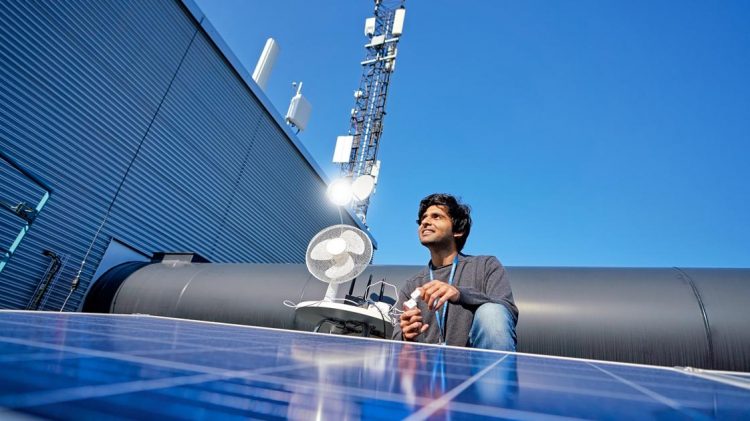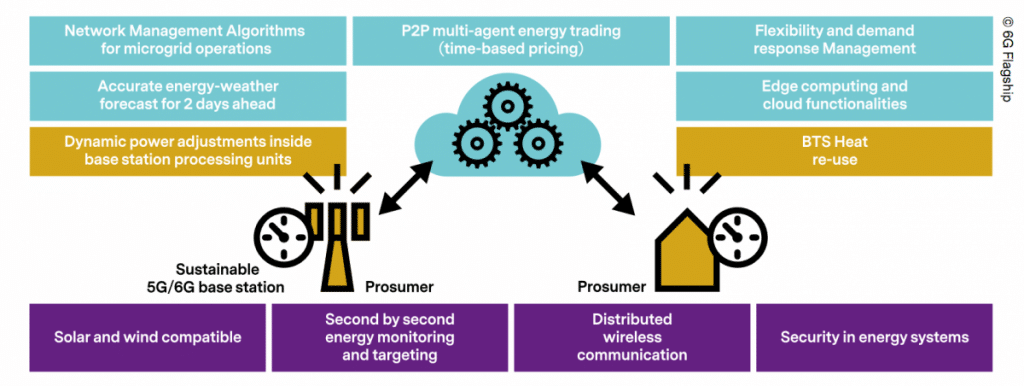
Sustainable and flexible 5G/6G solutions for energy grids
With the introduction of latest innovations in mobile technologies, the ICT sector can create wide positive impact on the reduction of CO2 emissions. For each CO2 ton caused by broadband radio networks, ten tons can be reduced elsewhere by e.g. increased remote working, avoidance of traveling and effective use of digitalized services. This makes wireless connectivity a major contributor towards a zero-carbon society. Researchers and developers in Finland, and around the globe, are seeking innovative combinations of technical solutions, which build on renewable energy and novel features of mobile networks.
6G Flagship’s “Smart Energy Grids” team seeks to connect the electricity grid with communication networks and automation and to define novel mechanisms for energy market systems and structures. The team is now exploring a 5G/6G solution, which is powered by Renewable Energy Sources (RES), and provides the backbone for communications as well as computing for the information exchange required for maintaining such grids. “The ultimate goal is to integrate and intertwine the solutions on flexibility management, grid control, energy trading, network management and distributed wireless communi-cations into an environment that can demonstrate renewable generation penetration approaching 100%,” says professor Ari Pouttu who leads the team.
Recently, there has been a rapid growth in RES such as photo-voltaics (PV) and wind generation. Furthermore, storage systems, electric vehicles, micro-generation and flexible loads at the premises of end users add flexibility to the system. “To address the volatile nature of RES, we aim at developing fully distributed novel paradigm empowering peer-to-peer (P2P) flexibility approaches that are able to optimize the usage of demand-response (DR) as well as RES,” Pouttu says.
Sustainable microgrid model
The researchers are now modeling a virtual power plant where a large number of small micro-generation units are aggregated into one larger entity, which can then enter the energy market. The research focus at this stage is on the design and implementation of the sustainable microgrid scenario.
“We are investigating the most suitable wireless communication strategies in order to distribute information more efficiently,” Pouttu says. “The use of key cloud functionalities, such as time-based approach and event-based approach, edge computing and edge devices coupled with accurate energy weather forecast for 48 hours ahead, can aid the demand response management, diagnose wasted energy and thus improve our sustainable microgrid model. In addition, real-time data of the university’s 800 kW solar production unit is connected to and is available from the 5G live Test Network and with accurate local weather estimates the day ahead, give us tools for handling the balancing market.”

The team also develops advanced P2P multi-agent or machine learning based DR-based frequency and voltage control methodologies. They allow local trading of energy and inclusion of accurate weather and power consumption data. As a result, flexibility of usage between prosumers increases inside a microgrid, consisting for example of sustainable communities in remote or developing areas as well as of microgrid operators and distribution system operator / transmission system operator for grid-connected microgrids in developed areas.
“The solution itself can be built in a hierarchical manner from household level to microgrid, to distribution grid, and all the way to transmission grid making the solution scalable and more importantly resilient,” Pouttu says. “On the other hand, large investments to our current mostly centralized power grid makes the penetration of these technologies rather slow, but it does offer an avenue to integrate gradually large amount of microgeneration into our future carbon positive power system.”
This story was originally published in 6G Waves 2. Read more stories from the magazine.